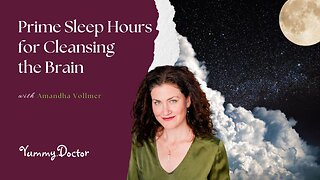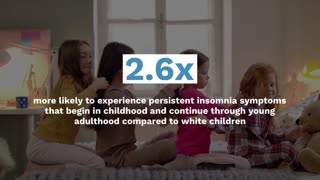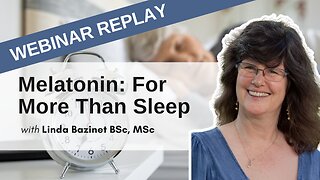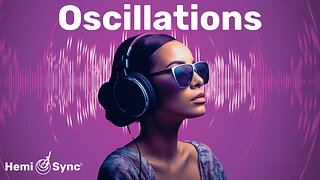What Makes You Tick: Circadian Rhythms
How do you know when it's time to wake up or go to sleep? More powerful than any alarm are your circadian rhythms. In this animation we take a look at how these rhythms work and what controls them, inspired by the TeenSleep project being carried out at the University to look at how later start times at school might affect achievement.
How does our body know when it’s time to sleep?
Humans detect light through the eye. Light enters the eye and is focused onto the retina at the back of eye. The retina contains photoreceptive cells that detect light and send this information to the brain, via the optic nerve. The most obvious outcome of this process is the ability to form images; to see. Image-forming vision depends upon rod and cone photoreceptors, which are critical for low light vision and bright light colour vision, respectively. However, it was discovered in 1999 that the circadian system of animals lacking rods and cones could still respond to light. This led to the discovery of a new class of photoreceptive cells: the photo-sensitive retinal ganglion cells (pRGCs), which express the light sensitive pigment melanopsin. These pigments undergo a chemical reaction when they absorb light, which causes the ganglion nerve cells to fire signals to the brain.
These signals from the melanopsin pRGCs feed directly into the Suprachiasmatic Nuclei (SCN). These are cells in the hypothalamus, near the base of the brain, which contains the master circadian clock (or pacemaker). The SCN orchestrates our circadian processes, to make sure that systems throughout our bodies are working together, in time. This system is also involved in controlling our sleep-wake cycle. As the level of light gradually decreases at the start of the night we produce increasing levels of a hormone called melatonin. Melatonin plays a vital role in our day-night cycles, acting as an internal signal of night time.
Why is being exposed to light at the wrong time so bad?
If we are exposed to light at the wrong time, say because we work night shifts, this confuses our system. Light supresses the production of melatonin, and promotes wakefulness. We delay our sleep and other circadian and sleep-dependent processes. We can work nightshifts for years and our circadian system will not adapt to our new sleep-wake cycle – primarily because we are exposed to natural light during the day, which is far brighter than artificial light sources. This leads to a whole host of problems. Working through the night means we are working when our bodies are craving sleep.
Is it different for teenagers?
The reason we are so interested in sleep during adolescence is because our circadian rhythms change during this period. From the age of 10 until around 21 our circadian rhythms delay. This means that as we go through adolescence and into early adulthood we are naturally more inclined to go to bed later and also to get up later. This is a biological process, and will happen to teenagers regardless of their environment.
Asking an adolescent to get up at 07:00 to start school at 09:00 is akin to asking a 55-year-old to get up at 05:00: this leads adolescence to accumulate a significant amount of sleep deprivation. The circadian drive isn’t optimised for wakefulness and engagement until around 10:00.This means that adolescents are typically starting school at a time when they are feeling the effects of sleep deprivation and when their natural rhythms are not optimised for alertness, and therefore learning. There have been a whole host of studies, mostly from the US showing that a delay in the school start time improves sleep, mood, well-being, alertness and academic outcomes with one study suggesting that a delay in the school start time is more effective than improving the quality of the teaching.
Whilst timing of sleep (and activity) is important, so too is understanding what other factors might affect the quality of your sleep. Not only do adolescents have a natural biological predisposition to staying up later, but the devices they use to communicate and for entertainment may also impact sleep. TV screens, tablets and phones emit light at a level which may interfere with sleep onset, compounding the effects of the naturally occurring circadian delay. A recent study has suggested that teenagers may be particularly susceptible to the effects of light emitting deceives. Students are also dealing with the stress of exams and the pressure to perform well. The TEENSLEEP study aims to address some of these issues by looking at the effect of sleep education and delaying the start time of teaching on sleep quality and academic outcomes.
Creative Commons Attribution license (reuse allowed)
-
 23:49
23:49
THEDRSGUIDE
1 month ago"Struggling to Sleep? Uncover Lesser-Known Tips from Sleep Doctors" The Doctors Guide w Dr Rademaker
231 -
 0:49
0:49
yummydoctor
30 days ago $0.06 earnedPrime Sleep Hours for Cleansing the Brain
88 -
 22:26
22:26
RAW DOG FOOD AND COMPANY
26 days agoHow to Set your Pets Circadian Rhythms
7 -
 1:04
1:04
Cryptostreets
1 month agoThe Unequal Night: New Research Reveals How Sleep Disparities Start in Childhood
66 -
 3:18
3:18
HealthOdyssey
1 month agoZinc Has Unexpected Sleep Benefits - Dr. Eric Berg
299 -
 1:17:08
1:17:08
Instituteofholisticnutrition
22 days agoMelatonin: A Powerful Pineal Gland Hormone For Much More Than Sleep | Webinar Apr 20, 2021
19 -
 1:15
1:15
CoverVideo
4 years ago $0.46 earnedResearch shows that too much sleep could be bad for you
14K3 -
 30:30
30:30
Hemi-Sync®
1 month agoOscillations | Raise Your Vibratory Rate | Music For Hemisphere Synchronization #meditationmusic
140 -
 6:45
6:45
TracyHerbert
23 days ago $0.05 earnedTired of Feeling Tired? Try These 9 Proven Energy-Boosting Strategies!
25 -
 1:06:29
1:06:29
Spectrum Awakening
1 month agoAutism: Allergies, Histamine & Sleep
76